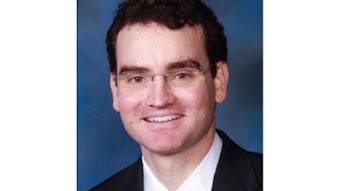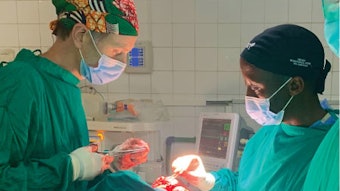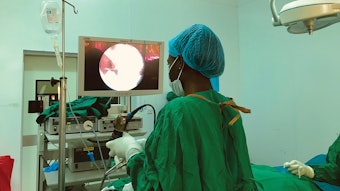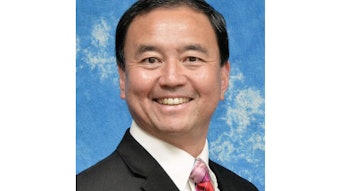From the Education Committees: Dorsal Preservation Rhinoplasty
The tale of dorsal preservation rhinoplasty is a common one in surgery; a pioneering technique, forgotten in dusty journals, gets rediscovered and takes a field by storm.
P. Daniel Knott, MD
Chair, Facial Plastics & Reconstructive Surgery Education Committee
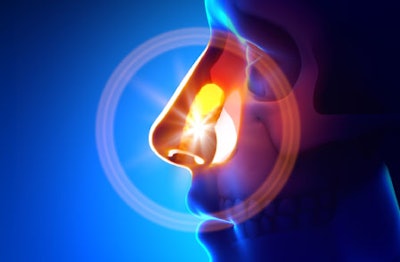
Jacques Joseph, MD, is widely credited with developing aesthetic nasal surgery in Berlin in the early part of the 20th century.1 He described techniques of dorsal hump takedown and lateral osteotomies to remove dorsal humps while maintaining aesthetic contours and profiles. Since his early descriptions, so-called Joseph rhinoplasty, either by endonasal or open approaches, defined the art of rhinoplasty for the past century. Whether representing a purely reductive approach or consisting of open structure techniques preaching cartilage grafting and cartilage repurposing, dorsal hump takedown with osteotomies has remained the mainstay in reducing the size of the prominent nasal profile.
A small group of national and international surgeons, working independently and collaborating at international meetings, has rediscovered a fundamentally different and alternative approach. Termed “dorsal preservation rhinoplasty,” this procedure consists of bony and cartilaginous septal weakening maneuvers that allow the entire bony/cartilaginous structure of the dorsum to be reduced into the nose while preserving the integrity of the dorsum.2
Dorsal preservation rhinoplasty, also commonly referred to as the “Cottle” rhinoplasty, was actually described by a group of rhinoplasty surgeons—including Maurice Cottle, MD, Joseph Goodale, MD, and Olivier Lothrop, MD—at the end of the 19th and start of the 20th century.3 Divided into two main approaches, the “letdown” technique, wherein crescents of the ascending process of the maxilla are removed in conjunction with the performance of transverse osteotomies that allow the dorsum to “drop” into a lower position, and the “pushdown” technique, where lateral and transverse osteotomies are made and the nasal dorsum is “pushed” down into position with the lateral nasal sidewalls telescoping into the nasal cavity, preservation rhinoplasty is rapidly growing in popularity. Offering the ability to refine dorsal profiles without disruption of the bony/cartilaginous dorsal vault, preservation rhinoplasty may offer a reduction technique with less potential negative impact on the nasal airway.
Dorsal preservation rhinoplasty techniques likely fell out of favor due to the difficulty of performing the cartilaginous cuts, uncertainty about the stability of the dorsal position, and difficulty with managing deviated noses. As limitations of current techniques have been recognized, as well as the development of greater anatomic understanding coupled with new piezoelectric instrumentation, dorsal preservation rhinoplasty has been rediscovered and reinvigorated.4,5
The American Academy of Facial Plastic and Reconstructive Surgery has been quick to embrace the reemergence of this old technique and dedicated a full day to discussions, anatomy, and cadaver dissections of dorsal preservation rhinoplasty at the most recent rhinoplasty meeting at Walt Disney World in 2019. Academic departments, national and international meetings, and residency teaching programs will likely look for ways to encourage and embrace this new approach as it becomes more widely accepted.
References:
1. Simons RL, Hill S., 100-year history, facial plastic surgery: the father of modern facial plastic surgery. https://www.abfprs.org/about/h_father.cfm
2. Saban Y, Daniel RK, Polselli R, et al. Dorsal preservation: the push down technique reassessed. Aesthet Surg J. 2018;38(2):117-131.
3. Lee J, Abdul-Hamed S, Kazei D, et al. The first descriptions of dorsal preservation rhinoplasty in the 19th and early- to mid-20th centuries and relevance today. Ear Nose Throat J. 2020;3:145561320925572. doi: 10.1177/0145561320925572
4. Patel PN, Abdelwahab M, Most SP. A review and modification of dorsal preservation rhinoplasty techniques. Facial Plast Surg Aesthet Med. 2020;22(2).
5. Toriumi DM, Kovacevic M. Dorsal preservation rhinoplasty: measures to prevent suboptimal outcomes. Facial Plast Surg Clin North Am. 2021;29(1):141-153. doi: 10.1016/j.fsc.2020.09.009
